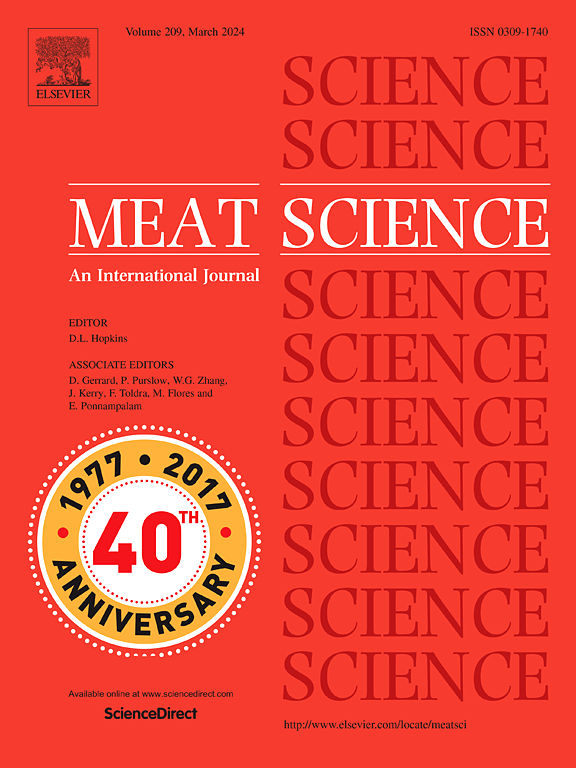牧场饲养肉类产品中植物化学物质表征的挑战与机遇
IF 6.1
1区 农林科学
Q1 Agricultural and Biological Sciences
引用次数: 0
摘要
消费者越来越关注他们消费的肉类的来源、福利和营养质量。现有文献表明,牧场饲养的牲畜可以将饲料中的植物营养素吸收到肉中。先进的分析方法,如液相色谱-质谱法(LC-MS)和气相色谱-质谱法(GC-MS),现在已经可以鉴定肉类中的植物源性非挥发性化合物。这些生物标志物对于验证牧场饲养的肉类至关重要,可以支撑严格的肉类质量法规和保证体系,从而提高行业声誉和竞争力。研究表明,与以精料饲料喂养的动物相比,以富含植物化学物质的饲料喂养的动物在肌肉中表现出更高的总多酚含量。然而,关于肉类中植物化学物质的生物利用度的信息有限。本文综述的目的是全面分析肉类中非挥发性生物标志物的提取、纯化和表征的最新方法,并评估其作为肉类真实性和营养指标的有效性。本文章由计算机程序翻译,如有差异,请以英文原文为准。
Challenges and opportunities in characterisation of phytochemicals in pasture-fed meat produce
Consumers are becoming increasingly concerned with the origin, welfare, and nutritional quality of meat they consume. Existing literature suggests that pasture-fed livestock can absorb phytonutrients from their feed into their meat. Advanced analytical methods such as liquid chromatography-mass spectrometry (LC-MS) and gas chromatography–mass spectrometry (GC–MS) have now made it possible to identify plant-derived non-volatile compounds in meat. These biomarkers are crucial for authenticating pasture-fed meat to underpin stringent meat quality regulations and assurance systems, thus enhancing industry reputation and competitiveness. Studies have shown that animals fed with a diet rich in phytochemicals exhibit higher total polyphenol content (TPC) in their muscle compared to those fed with a concentrate diet. However, there is limited information available on the bioavailability of phytochemicals in meat. The aim of this review is to comprehensively analyse the latest methods for extracting, purifying, and characterising non-volatile biomarkers in meat, and to evaluate their effectiveness as indicators of meat authenticity and nutrition.
求助全文
通过发布文献求助,成功后即可免费获取论文全文。
去求助
来源期刊

Meat Science
工程技术-食品科技
CiteScore
12.60
自引率
9.90%
发文量
282
审稿时长
60 days
期刊介绍:
The aim of Meat Science is to serve as a suitable platform for the dissemination of interdisciplinary and international knowledge on all factors influencing the properties of meat. While the journal primarily focuses on the flesh of mammals, contributions related to poultry will be considered if they enhance the overall understanding of the relationship between muscle nature and meat quality post mortem. Additionally, papers on large birds (e.g., emus, ostriches) as well as wild-captured mammals and crocodiles will be welcomed.
 求助内容:
求助内容: 应助结果提醒方式:
应助结果提醒方式:


